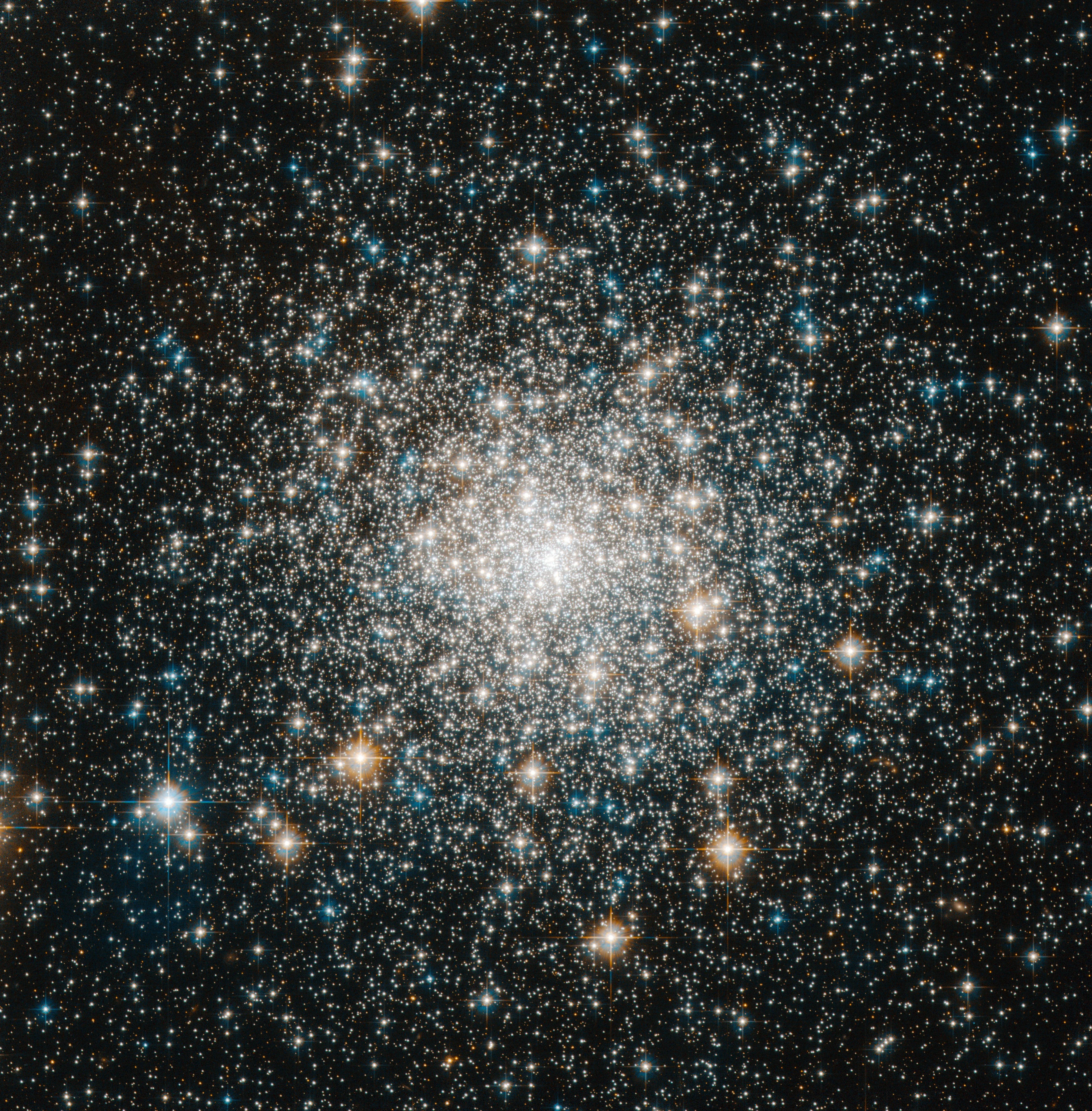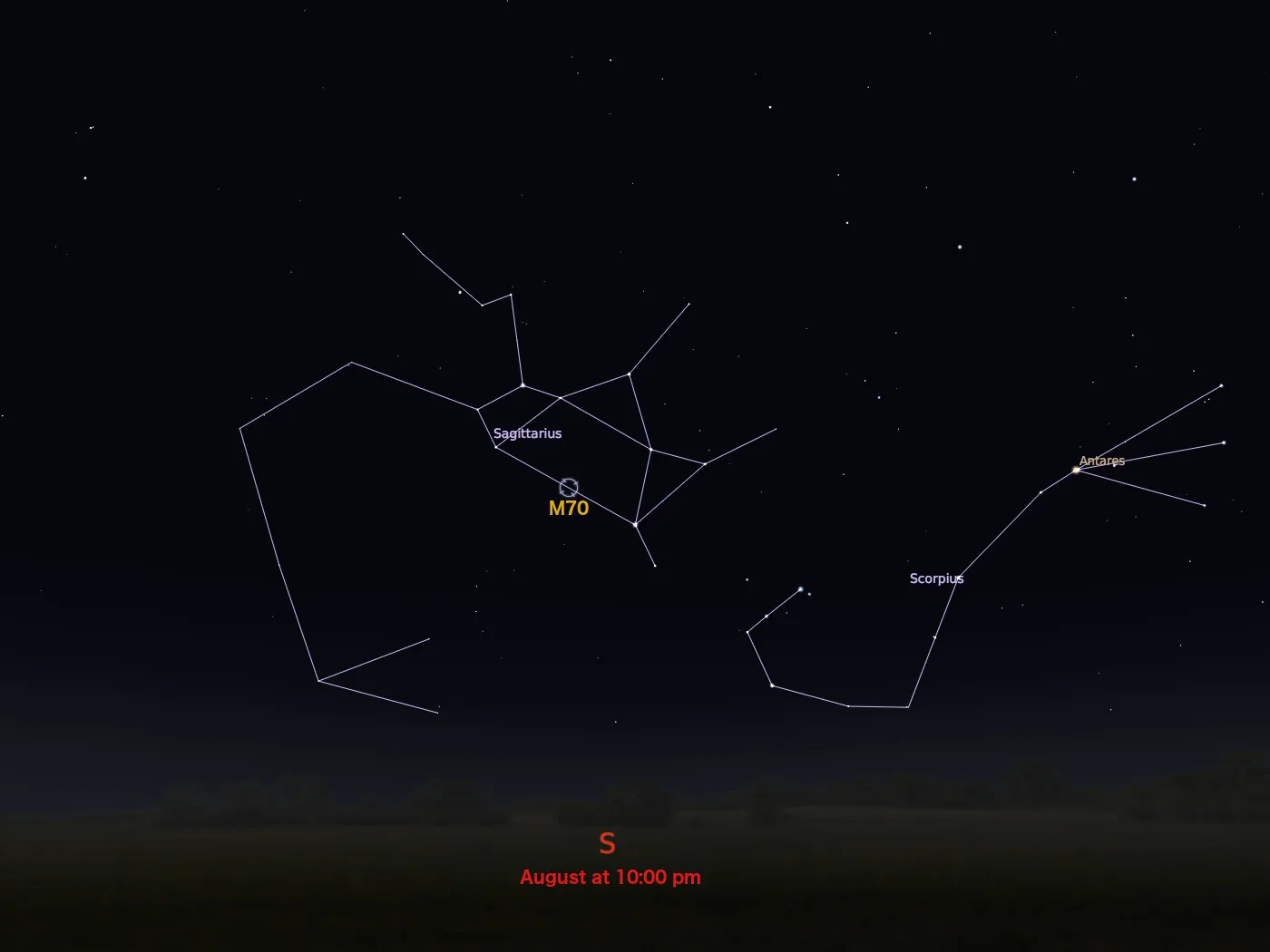Messier 70
Messier 70 has more stars at its core than the average globular cluster.
Distance
30,000 light-years
Apparent Magnitude
9.1
constellation
Sagittarius
object type
Globular Cluster

In this image, Hubble has captured the brilliant, compact center of the globular cluster M70 in both visible and infrared light. Quarters are always tight in globular clusters, where the mutual hold of gravity binds together hundreds of thousands of stars in a small region of space. M70 is particularly fascinating because it has undergone what is known as a core collapse. This means that even more stars squeeze into the object’s core than in an average globular cluster.
The legions of stars in a globular cluster orbit about a shared center of gravity. Some stars maintain relatively circular orbits, while others loop out into the cluster’s fringes. As the stars interact with each other over time, lighter stars tend to pick up speed and migrate out toward the cluster’s edges, while the heavier stars are slower and congregate toward the center. This huddling effect produces the characteristically dense center of core-collapsed clusters. About a fifth of the roughly 150 globular clusters in the Milky Way have undergone a core collapse.
M70 was discovered by Charles Messier in 1780. It is located 30,000 light-years away in the constellation Sagittarius. With an apparent magnitude of 9.1, the cluster can be observed through a small telescope best in the month of August.
For more information about Hubble’s observations of M70, see:

Explore Hubble's Messier Catalog
The following pages contain some of Hubble’s best images of Messier objects.

Messier 1 (The Crab Nebula)
Better known as the Crab Nebula, Charles Messier originally mistook Messier 1 for Halley’s Comet, which inspired him to create…

Messier 2
Hubble's image of Messier 2 is comprised of visible and infrared wavelengths of light.

Messier 3
Messier 3 holds more than 500,000 stars.




